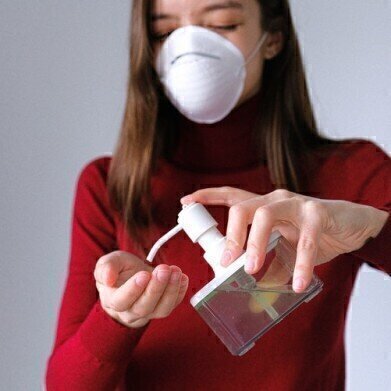GC-MS
Chromatography Investigates the Hidden Health Implications of Pandemic Cleaning Products
Sep 23 2020
One of the consequences of the coronavirus pandemic is an increased use of cleaning products. Air fresheners, disinfectants, soap, hand sanitizers and multipurpose surface cleaners have all seen an increase in sales and use. A large part of the discussion about these products has been around their effectiveness at killing the coronavirus to keep us safe – more is better. But what about the emissions from these products?
As we use more cleaning products, whether by cleaning more frequently or using more product, our chemical exposure to the ingredients used and the products themselves increases. The products that are meant to protect us from harm could be causing us harm. In a recent study published in the journal Air Quality, Atmosphere and Health, researchers analysed what is emitted from the products and could they pose a hazard to human health? They also looked at whether ‘green’ or ‘natural’ products are different from standard cleaning products with respect to their emissions. And chromatography was key to answering this cleaning conundrum.
Cleaning for health?
Government advice is that employers must protect people from harm, which includes taking steps to protect workers from coronavirus and Covid-19. The virus can transfer between people, from people to surfaces and passed on to people who then come into contact with those surfaces. It is the same at home and in public areas like buses and shops. Keeping surfaces clean and frequent handwashing or sanitizing are recommended to reduce the potential for transmission of the virus.
But cleaning and disinfection products have a history of having an effect on health – hence the warnings on correct usage of products. Previous studies have reported unfavourable outcomes linked to the chemical exposure from cleaning products. Conditions such as migraine headaches, asthma attacks and dermatological problems have all been related to chemicals exposure to chemicals used in cleaning products.
Chromatography helps assess the risk
For the study mentioned above, researchers analysed the emissions from 26 common cleaning and disinfectant products on sale in the United States and Australia. These included hand sanitizers, multipurpose cleaners, disinfectants, and soaps. All the products were fragranced, and the products included green and natural products. The volatile ingredients were analysed using gas chromatography/mass spectrometry (GC/MS). The use of GC to analyse volatile components is discussed in the article, Analysis and Identification of Mezcal and Tequila Aromas by Ambient Ionisation MS, GC-MS, and GCxGC-MS.
The researchers identified 172 different volatile compounds in the 26 products tested, with approximately 37%, of the VOCs are classified as potentially hazardous. The most prevalent VOC detected was limonene, in both the regular and green products. Other potentially hazardous VOCs include ethanol, acetaldehyde and 3-carene. The team found no significant differences between the ‘green’ and ‘regular’ products. Of concern was that these hazardous chemicals are not disclosed to the public – which is allowed by the regulations.
Digital Edition
Chromatography Today - Buyers' Guide 2022
October 2023
In This Edition Modern & Practical Applications - Accelerating ADC Development with Mass Spectrometry - Implementing High-Resolution Ion Mobility into Peptide Mapping Workflows Chromatogr...
View all digital editions
Events
Apr 28 2024 Montreal, Quebec, Canada
May 05 2024 Seville, Spain
May 15 2024 Birmingham, UK
May 19 2024 Brno, Czech Republic
May 21 2024 Lagos, Nigeria














